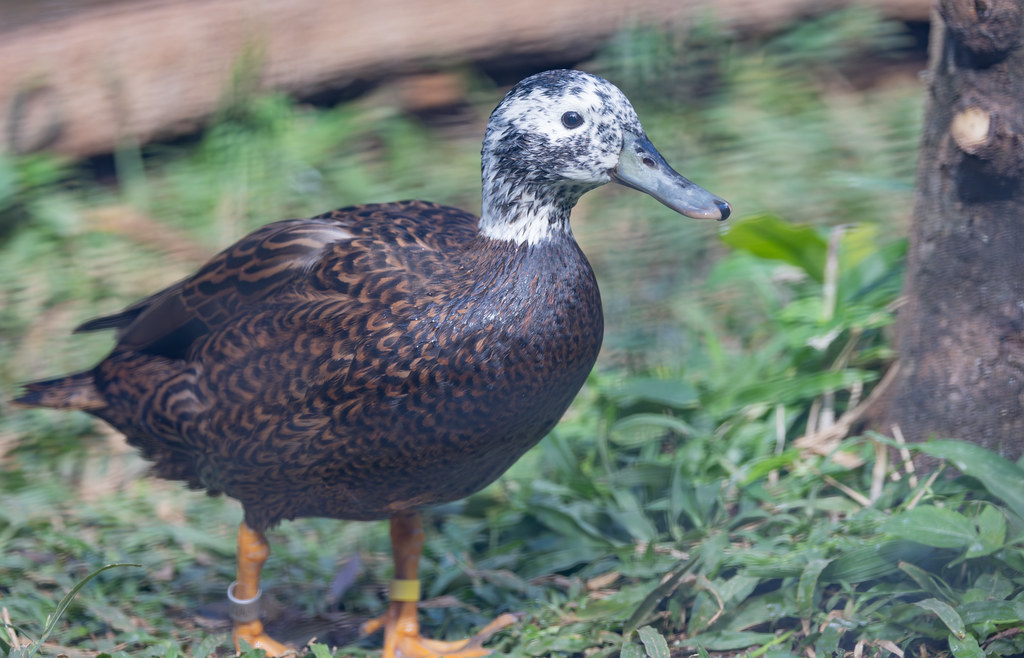Laysan Duck
| Anas laysanensis | Order: Anseriformes | Family: Anatidae (Ducks, Geese, and Waterfowl) |
This handsome duck was found throughout all the Hawaiian islands until humans entered the scene. The duck’s ancestors apparently were a genetic line of ducks from an East Asian southern hemisphere ancestor of Mallards. Without any mammalian predators, the Laysan Ducks became adapted for feeding on the ground and walking and running rather than flying. When they detect a predator, rather than flying off they freeze in place–an excellent strategy when the only real predators they faced were Pueo (Hawaiian Short-eared Owls) and Great Frigatebirds. The early ancestors of Laysan Ducks had to be strong fliers to reach the Hawaiian Islands in the first place, but the adaptations that helped them thrive there for millennia doomed them after people arrived, and their poor flying ability prevented them from dispersing between islands.
Between AD 400 and 1000, as Polynesians colonized the islands, Laysan Ducks started to disappear, from direct human predation, predation by introduced mammals, and overgrazing by introduced mammals, and their decline accelerated grievously when Europeans arrived. By 1860, the ducks had disappeared from all but rat-free Laysan Island, giving them the tiniest geographic range of any duck species worldwide (415 hectares or 1.60 square miles).
Laysan Island gained federal protection in 1909 with the establishment of the Hawaiian Islands National Wildlife Refuge. However, introduced domestic rabbits devastated the island’s vegetation, bringing the duck to the brink of extinction in 1912, when the entire population numbered seven adults and five juveniles.
The last domestic rabbits on Laysan Island were eradicated by biologists in 1923, and the ducks began to recover, increasing to a population of about 500 individuals by the 1950s.The severe 1993 El Niño drought and food shortage reduced the number to about 100. In 2004, the population had risen to an estimated 576.
In October 2004 and 2005, 42 Laysan ducks were translocated to Midway Atoll National Wildlife Refuge to establish a second wild population. Those ducks are breeding at an earlier age and laying more eggs than birds on Laysan, suggesting that the abundant habitat and food available on Midway stimulated greater reproductive effort in the ducks. A third population has been introduced to Kure Atoll.
I’ve never seen Laysan Ducks in the wild. My only photo of this fascinating species was taken at the Honolulu Zoo.
